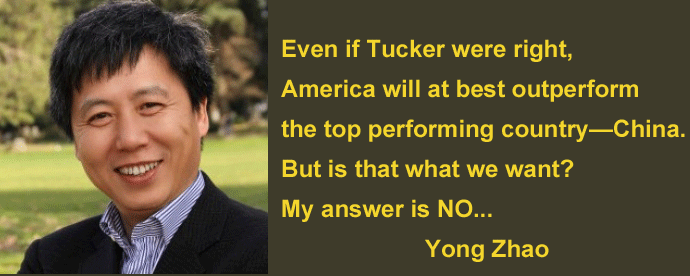What should we learn from Asia’s school systems?

Executive Summary [full report]
Interest in learning from Asia’s high-performing education systems has grown rapidly in recent years. A flurry of research reports, media stories, and personal accounts of how Asia’s best education systems achieved their superb rankings on international league tables has been produced in the quest to improve education systems around the world (OECD, 2011) (Tucker, 2011) (Tucker, 2014) (Jensen, 2012) (Barber, Donnelly, & Rizvi, 2012). However, most of the popular observations and suggestions fail to point out the most important lessons to be learned from Asia.
The lessons from Asian education systems do not relate to what helped them achieve their high scores on international comparative tests, but to the efforts they have engaged in over the past few decades to transform their educational practices. These efforts are often mistaken for policies and practices designed to produce the high academic performances indicated by international tests, while in reality they are intended to create a different kind of education, an education deemed necessary for cultivating citizens in the twenty-first century.
In other words, what Asia’s high-performing systems have to offer the world is not their past, but the future they intend to create. It is their vision of a new education and the courage to make changes to long-held traditions and cultural practices.
This report is based on studies of reform efforts in Asia’s high-performing education systems, specifically in Hong Kong, Korea, Singapore, and Shanghai, which have been undertaken over the past three decades. This report is not about ‘catching up’ to the Asian school systems in international rankings, for even if we could learn everything and take 10 years to do so (which is next to impossible), in that time the world will have changed so much that a new order of education will be required.
Over the past few decades, these four Asian education systems have engaged in massive reform efforts. Although these efforts have had varying degrees of success, and some have resulted in consequences opposite to their intentions, they represent a strong desire to create education systems that are more fitting for the future. The reform efforts have been characterised by the following:
Expanding definition of education outcomes
All four East Asian systems have been implementing reforms that expand the definition of education outcomes beyond academic performance in a narrow set of subjects. They are targeting skills commonly known as twenty-first century skills such as creativity, communication, collaboration, and higher order thinking skills are what they are after. They are also interested in student social-emotional and physical health.
Improving equity of educational opportunities
All these systems have been working on major reforms to improve equity of opportunity, not just in terms of curriculum and pedagogy, but also and perhaps more important in resources and access.
They are removing regulations and laws that previously purposefully created inequity, challenging the tradition of meritocracy and creating new opportunities.
Loosening central control
These systems (except for Hong Kong) are traditionally centralised, but in recent years they have been gradually loosening central control. Local governments and schools have been granted more autonomy in curriculum, pedagogy and assessment.
De-emphasising testing
These systems have all recognised the dangers of over-testing students and have enacted policies and efforts to reduce the importance of standardised and centrally administered testing.
Transforming pedagogy from knowledge transmission to inquiry-based and constructivist
The Asian systems have engaged in massive efforts to transform pedagogy, to move away from their traditional approach of direct instruction that emphasises knowledge transmission and rote-memorisation toward a constructivist approach that is more student-centred and inquiry-based.
Capitalising on technology
The East Asian education systems have strong future orientation. They are employing emerging information and communication technologies for improving education and developing digital literacies.
Broadening the curriculum
The systems have enacted curriculum reforms to broaden students’ education experiences beyond the traditional academic subjects, while strengthening the core subjects. Stressing moral education, the arts, physical education, and social skills are a common theme of reforms in these systems.
Reducing the academic burden
Policies and actions have been implemented to reduce student academic burdens, to reduce the amount of time devoted to school subjects outside school, and to reduce the pressure of schoolwork.
